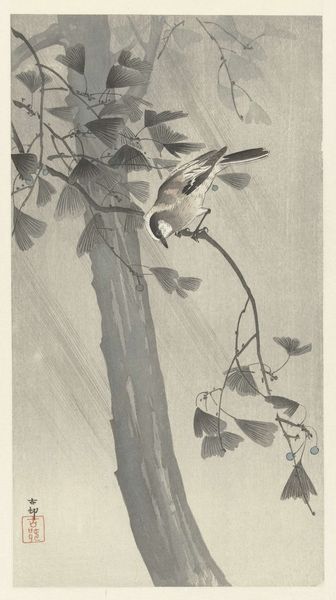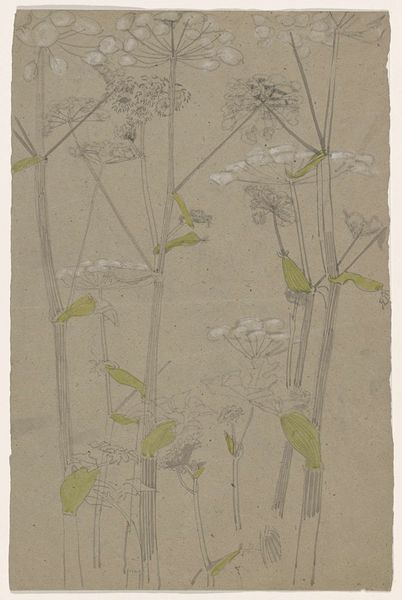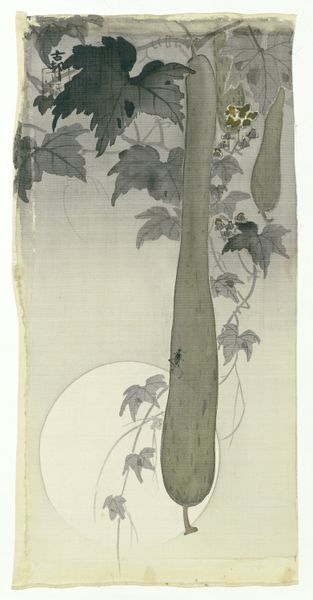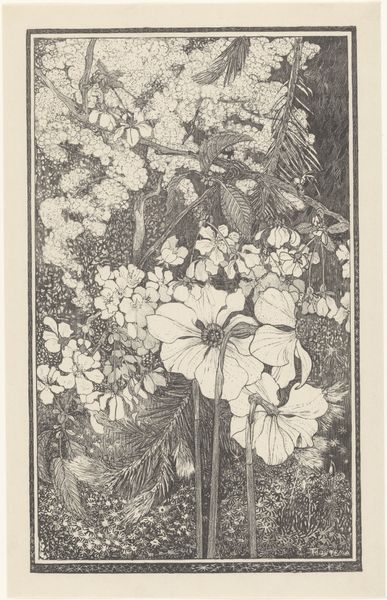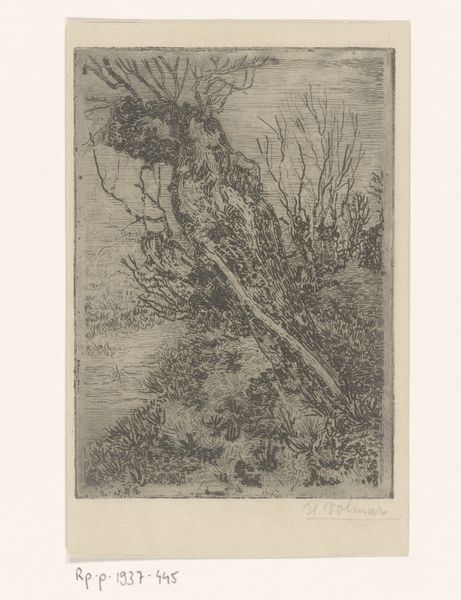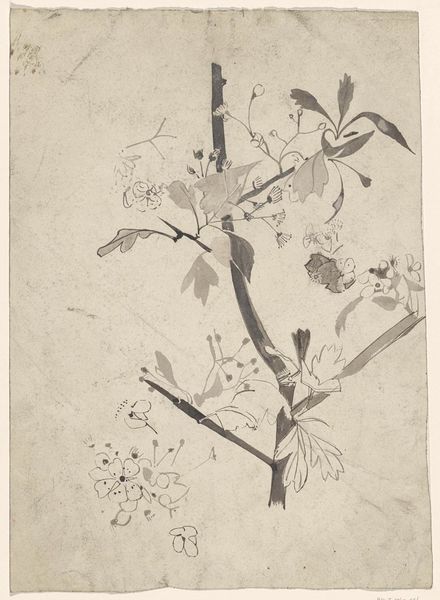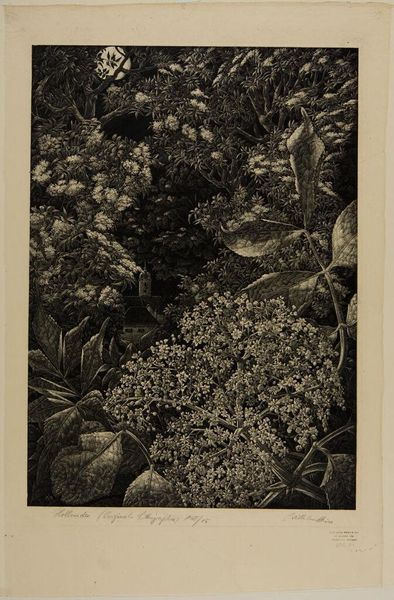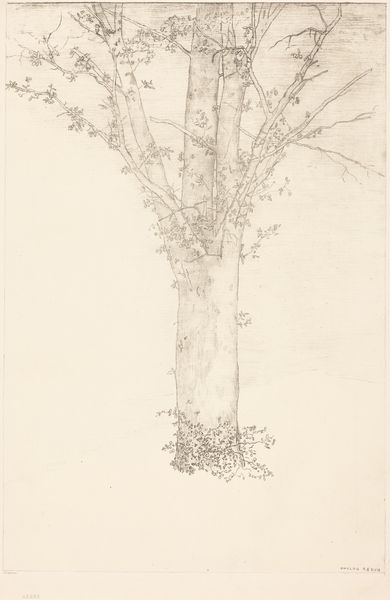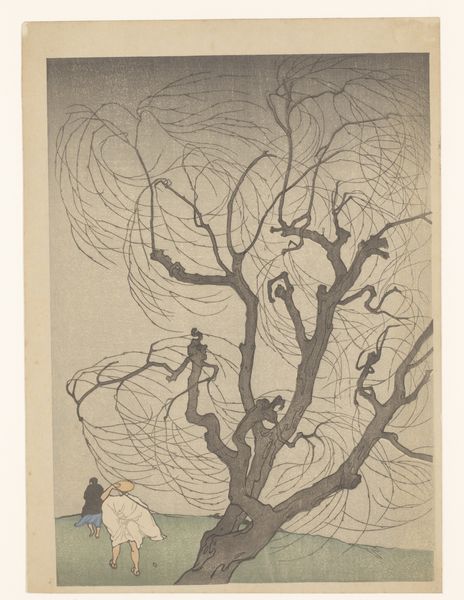
Dimensions: plate: 31.5 x 13.9 cm (12 3/8 x 5 1/2 in.) sheet: 33.7 x 15.8 cm (13 1/4 x 6 1/4 in.)
Copyright: National Gallery of Art: CC0 1.0
Editor: We’re looking at “Yearnings” by Max Klinger, made between 1878 and 1880, using etching. The figure in the foreground, slumped with what seems like grief, immediately captures my attention. It has this sense of Romantic loneliness, but the stark contrast of black and white makes it quite arresting. What compositional elements do you notice? Curator: Note the striking verticality introduced by the stark, leafless trees against the horizontal form of the landscape. These upright elements interact in direct opposition to the bent, broken form of the figure. We might ask ourselves, "Why is Klinger concerned with vertical and horizontal orientation in this print? And does that choice augment, or undermine, the emotional effect?" Editor: That's fascinating! It creates a sense of tension, almost a visual representation of internal conflict, and now I see what appears as another person way off in the background near the flat plane of the ocean or some water. Do you think the artist intended to create unease using orthogonals and a far background like this? Curator: Absolutely. Observe how the light delicately outlines the body while the features fade, and how those roses draw the eye to the high sky beyond the background figure. We're meant to decode these directional gazes across the pictorial plane of the etching. Consider also the contrast between smooth sky and mountains against a stark landscape of rolling lines of grass and ground. What is the effect? Editor: So the juxtaposition between smoothness and ruggedness contributes to this overwhelming sense of longing? Seeing that second figure on the distant plane next to those erect vertical trees, makes me believe this character hopes to find connection across a lonely world of sharp edges, deep valleys and lightless places. Thanks for walking me through all this Curator, I wouldn't have noticed that otherwise. Curator: Indeed. Close examination allows us to ask critical questions of the relationship between the artist, the figure, the medium, and ourselves. By isolating the formal elements, we arrive at greater insights into Klinger's creation of art and emotional landscape.
Comments
No comments
Be the first to comment and join the conversation on the ultimate creative platform.
